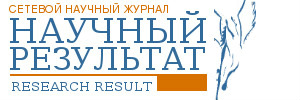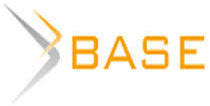Several researches in the educational context of Brazil have already pointed out that teachers in the country look forward to teaching methodologies and practices that are capable enough of sustaining them through the challenges in the classroom [1; 2; 3; 7; 8; 9]. This article shares the results of a number of researches of Didactic-Formative Intervention [10] that were outlined in accordance with the Cultural Historical Theory and the Developmental Education. The context was Brazilian High School and its adolescents, i.e. transitional age youths.
The systematic study sought to identify which developmental processes are most likely and adequate for the transitional stage. Subsequently, as a possible synthesis, propositions of teaching organization were established and materialized in the form of principles and didactic actions that serve as guidelines for the teaching practice.
1 Didactic principles that guide the Developmental Education
Although an extensive number of authors [4; 5; 6] have already schematized didactic principles from the perspective of the Cultural Historical Theory, it is worth mentioning that, in the context of this article, the propositions consist in the formulation of feasible principles for High School in Brazilian public schools. Thus, they are situated both historically and socially. According to the literature, there are four principles that guide the didactic action in the allotted conjuncture: 1. the class seen as a process of forming concepts; 2. teaching as an activity that promotes crisis; 3. the teaching practice and its capability of forming new interests; 4. teaching in order to develop the intellectual abilities of an awareness of itself.
The class seen as a process of forming concepts
The formation of concepts and the conceptual thinking must be established as primary goals of teaching practices and the professor’s teaching activities. The transitional period offers unique conditions for the development of thought during adolescence. The formation of concepts is central to the revolutionary transformations that occur to an adolescent’s superior psychic abilities. Besides finding in adolescence a favorable stage for development, they are capable of transforming the psychic structure and of subordinating the psychological functions that are elementary to the intellect [15]. Being the first principle and teaching goal, the formation of concepts crosses all other principles and systematized didactic guiding actions. In addition, all other principles are connected to this one and find in it its feasibility.
The formation of concepts and the subsequent development of theoretical thinking stand for the establishment of superior abilities of perceiving reality. Those new abilities transform the psychic structure. Furthermore, they are responsible for enabling the student to assign sense for the reality he/she observes and in which he/she is inserted, by appropriation of the concept’s meanings.
The ability that must be developed in order to motivate teaching practice, in what concerns theoretical thinking, relies on the formation of concepts. A similar process occurs in the child when the verbal thinking finds in the formation of the word meaning a fundamental condition [15; 16; 17]. In other words, the ability to analyze, understand and intervene in reality holds scientific concepts as its instruments, and this is why the occurrence of one is closely linked to another. Such ability is contingent on the theoretical thought.
As theoretical instruments that represent the results of human work, concepts are essentially social. They are the outcome of a long historical process that has enabled the formation of its most diverse types in each historical moment [14]. Their appropriation enriches the social experience of subjects, especially students, and this movement amplifies the meanings that attribute sense to their reality.
In investigating children’s development, Vygotsky [16, p. 236] expressed that concepts are not formed by copying the characteristics and elements of the external reality to the interior of the subject’s mind. On the contrary, they are the result of a “long and complex process in the evolution of children’s thought”, being essentially social.
According to these findings, every set of principles and didactic actions systematized herein, aims to establish the class principle as a formative process of the concepts. Every environment and didactic actions are organized with this goal.
Teaching as an activity that promotes crisis
Every period of human development is marked by some process of crisis. The adolescence stands out for its collection of relevant crises and the intensity of the development processes that are in action in this period [15; 16]. The threshold experience of crisis is also the experience of recognition that a subject has concerning the limits to his/hers ability in providing solution to problems and challenges. Furthermore, the crisis is a development factor because it represents a problem with a solution located in a superior level in relation to the knowledge already acquired and the abilities previously developed by the subject. Thus, to solve a crisis implies to reach a set of new knowledge and abilities, namely, to transform potential knowledge and abilities into real ones.
Crisis is a distinct element that enables development and promotes the necessary reasons and interests for confrontation. Solving a crisis by means of appropriation of new cognitive-social content and also by elaboration/transformation of mechanisms of conduct is a sign of development [15; 16].
The teaching practice and its capability of forming new interests
The fundamental fuel for every development process lies in the subject’s inherent reasons and interests. This means that there can be no ongoing development process without having, in its basis, the outbreak of new interests and/or the reorganization of old ones [15]. In order to reach a potential learning and develop, one relies deeply on the existence of some kind of interest [15]. Therefore, a phenomenon that marks the transitional period is the internalization of new interests. This is based upon the need of confrontation with a new pattern of social relationship the adolescent experiments in this stage.
In other words, it is fitting that the teacher considers setting up an environment that offers the means for expanding and developing students’ interests. The increased participation in social situations is dialectically related to the development of conceptual thinking, resulting in the expansion of the adolescent’s interest for something beyond his/her immediate experience. This condition is positively transformed in an environment that supports good learning processes and that enables the development of new abilities and interests.
The use of problematization stands out as a remarkable didactic instrument. In this third proposition, problematization holds its importance as long as it can be used as a motivational tool. Problem situations are created and organized by the teacher, and they offer the student an external method of internalizing and developing interest for the study and the appropriation of school knowledge. Problematizations must be organized in a way so as to make sure that students are capable of providing an adequate solution to challenges, by applying scientific and school knowledge.
1.4 Teaching in order to develop the intellectual abilities of an awareness of itself
The development of consciousness as a superior psychological function has a social origin, linked to the development of perception, the formation of concepts and the conceptual thinking [15; 16; 17].
Vygotsky [9; 10] demonstrates that socialized language has a fundamental participation in the organization and formation of thought [15]. By socializing their internal language, children simultaneously take conscience of their own thought and start to form verbal thinking. Afterwards, in the transitional stage, verbalized thinking plays a decisive role in developing logical thinking, by converting concrete reality to an object of knowledge. It must be noted that in both moments the process of consciousness development is intimately connected to the elaboration of thought in language.
Every didactic strategy designed to require from the student the appropriation of knowledge from the verbal application of meanings and senses elaborated in the classroom enables the realization of thought. The development of intellectual abilities of an awareness of itself can only occur if the student recognizes the cultural heritage of his/her society and participates in its expression, by appropriation. The verbal elaboration of these meanings and senses is a safe way for appropriation.
Didactic actions serving as guidelines for the Developmental Education
The systematization of didactic principles has also permitted the systematization of five didactic actions that integrate them: 1. diagnosis as starting point and process of teaching-learning-development, 2. problematization as a generator of contradiction: propelling crisis and the emergence of interests, and being the driving force for the formation of concepts, 3. collective activity, 4. the patent consciousness in the intentional use of conceptual meanings and 5. generalization as an objectification of the concept for itself.
2.1 Diagnosis as starting point and process of teaching-learning-development
As long as the teacher recognizes the set of real and potential abilities of his/her students, it becomes possible the intentional planning of teaching activities that will offer the best conditions for the learning to occur, enabling development. The abilities that comprise the Zone of Proximal and Real Development are not immediately evident and are continuously moving and transforming. From the initial diagnosis the teacher is able to recognize the knowledge and abilities already mastered by the students, and then plan the teaching activities. Then, with continuous diagnosis, the teacher can enhance the possibilities of potential abilities and knowledge becoming real ones.
Problematization is a strategy that enables continuous diagnosis both in the form of adequate questions (idem) and problem situations [11]. It is the teacher’s duty to permanently evaluate changes in interests and patterns in students, since these alterations are a sign of developmental processes in action [15].
2.2 Problematization as a generator of contradiction: propelling crisis and the emergence of interests, and being the driving force for the formation of concepts
Vygotsky [16] elucidates how adolescence is a period of “crisis and thought maturation”. A typical feature of the transitional period is the establishment of new patterns of social relationships and needs, when old abilities developed during childhood prove no longer to be enough, and to fulfill the demands of this new context. This tense contradiction raises crisis, which for its turn generates great possibilities for the occurrence of developmental processes.
The recognition of the crisis’ potential for development plays a key role for the conception of teaching practices. These are understood as processes intentionally planned to provoke critical situations. Teaching issues, a feature of the problematization strategy [11; 12], are devised in order to demand a command of knowledge and abilities more sophisticated than the one the student carries in a given moment. This generates motivation in learning a new content and favors the development of the theoretical thinking. Problematizations act in the abilities circumscribed in the students’ Zone of Proximal Development (ZPD), highlighting the importance for continuous diagnosis, strategy previously described in this article.
2.3 Collective activity
The strategy of collective activity is a transformative element in the transitional age, and there are especially two reasons for this. First, because it takes advantage of the interests that are already present in students, i.e. to be in close contact with its peers, by bringing them closer to the aims of education and the teaching practice. This enables the teacher to bring up students’ interests while instigating them to participate in activities, habits and knowledge acquisition [15]. The second reason makes reference to the relevance of collective activities in formation processes of feelings, qualities and values [12].
Collective activities comprise opportunities of being in action and relation to the historical and cultural elements that must be internalized. This appropriation allows the formation of the conceptual thinking and, by doing so, transforms the psychic structure of the subject, while modifying old interests and establishing new standards of conduct [15; 16; 18; 19]. When mingled to the whole of the teaching practice, collective activities represent a strategy that act as a driving force for processes of appropriation and development.
2.4 The patent consciousness in the intentional use of conceptual meanings
Consciousness refers to the intentional use of appropriate conceptual meanings; namely, to make a transference “from the course of action to the language system, recreating it in the imagination in a way that is possible to express it in words” [16, p. 275]. Consciousness results from the dialectical relation between the activity elaborated in the concrete reality, the internalized elements and the establishment of personal senses. This process enables the capacity of intentional use of appropriate conceptual meanings.
Vygotsky [15] demonstrates that, in what concerns the process of internalization, the possibility of understanding meanings walks hand in hand with language, either in its social use as a means of communication or in its individual application as a mode of thinking. Thus, the socialization of thought by language becomes “the decisive factor for the development of logical thinking in the transitional age” [15, p. 101]. Furthermore, the development of formation of concepts and of the conceptual thought becomes possible through the intentional use of the personal senses elaborated by study and the internalization of scientific and school knowledge.
2.5 Generalization as an objectification of the concept for itself
The concept modifies the complete thinking system of an adolescent by equipping him/her with tools of in-depth knowledge and reality comprehension, as well as tools for self-comprehension. This is achieved by showing the student the logical structures in action [15]. The concept can be characterized as a phenomenon of thought, particularly because it has a generalized meaning.
The student can develop the ability of intentional use by understanding his/her reality – that is, its generalization –, through the critical experience of recognition of his/her own limits, through facing problem situations and also through the awareness of concepts’ meanings. The concept has already an existence by itself, independently of student’s appropriation, but once it attains the superior ability of generalizing its meaning, it becomes an instrument of the student’s thinking, achieving an existence for itself. By being able to generalize, the student extrapolates the limits of reproduction of a memorized meaning, becoming able to understand his/her reality and also the phenomenon he observes, mediated by scientific concepts.
In general, these principles and didactic actions, although presented separately, constitute a set of practices that are deeply guided by the Cultural Historical Theory. They allow the successful establishment of a teacher’s practice-theory unit with the aim of promoting students’ learning and development.
Информация о конфликте интересов: авторы не имеют конфликта интересов для декларации.
Conflicts of Interest: authors have no conflict of interests to declare.

















Список литературы
Список использованной литературы появится позже.